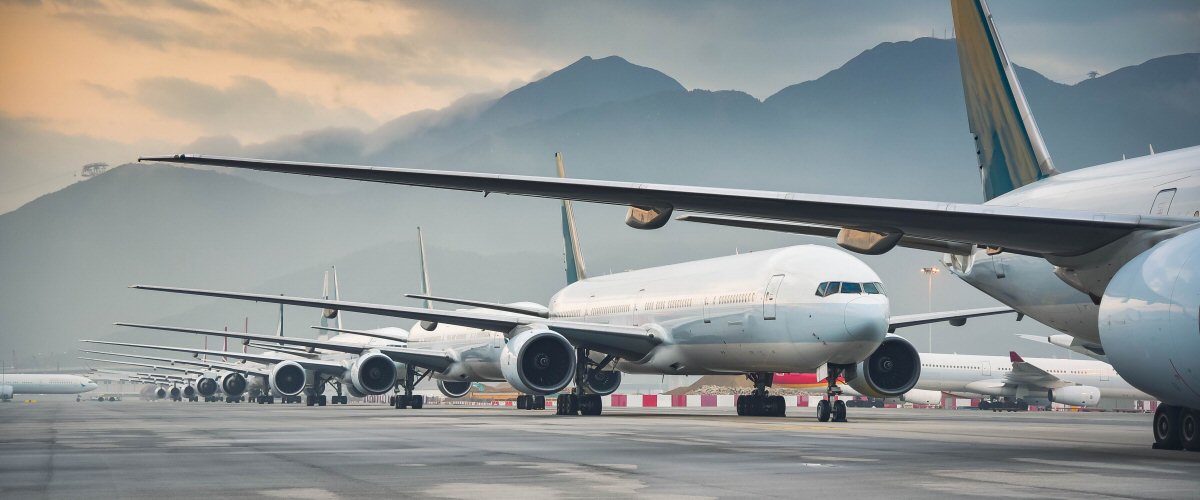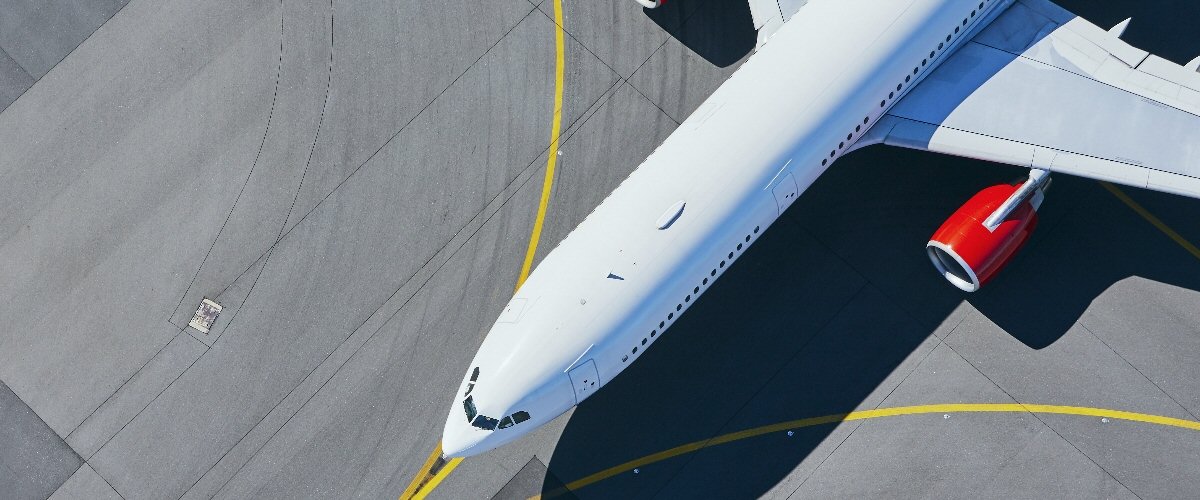Edition 12 | 28th June 2024 Download PDF
.png)
Cargo was in the spotlight more than ever during the pandemic, with airlines such as Qatar and Emirates doubling their cargo revenue, and Cathay Pacific having it become 79% of their total. As passenger traffic has recovered, this has continuously declined. With Federal Express (FedEx) committing to 22 x 757 retirements this week, it is worth recapping the takeaways of IBA’s cargo webinar to note trends and structural changes.
Yield in the pandemic rose as high as 204% of the high of 2018 (2019 missing the usual winter peak), and it has fallen since. Although, it is still at 142% of that level. Interestingly the global cargo tonnage has stayed relatively constant at around 50m tonnes in the last 10 years, showing it is principally a story of supply constraint.
The pandemic prompted a sharp uptick in conversions, with some programmes such as the A330ceo booked up 4-5 years forward. Conversions saw their peak at 204 in 2023 (126 narrowbodies, 58 widebodies and 20 regional jets/turboprops). The rate had been 70-100 a year between 2017 and 2020, however, this year is predicted to be a similar rate to 2021 and 2022 at around 160 or so. This slowdown is perhaps starting to reflect not only the yield drop affecting demand but also how supply constraints are affecting the conversion market. The same A330 programme that is oversubscribed has seen the P2F values increase due to difficulty in sourcing good quality feedstock as well as increased landing gear and engine costs. A330ceos may be back in vogue.
A worthwhile conversation point is also over-storage and utilisation. The beginning of 2022 appears to be a turning point in the global cargo fleet where the active fleet started to steadily decline from circa 80-85% to its current 75% level. As these freight rates drop, the older programmes will be less economical and will be phased out from regular use. In the narrowbody space, there is an oversupply of converted aircraft, however, the passenger market supply chain constraints will limit the feedstock, providing some support.
It is an interesting time to be in the cargo widebody space with both Airbus and Boeing offering a production freighter with the A350F, 777F and 767-300F variants. These present an interesting gamble to cargo airlines since the airframes can be utilised for a greater amount, for more revenue. However, their price tags also make that necessary! Greater adoption of these types could lead to further parking of the current fleet. Relating back to FedEx, the 22 aircraft only represent 5% of their 441 current fleet, so it's not a downturn for them as much as an adjustment. Nonetheless, 86 aircraft (19.5% of the fleet) being parked or stored is not ideal for any carrier.
IBA’s Consulting team have produced a deep-dive report on the cargo market outlook, which is now available to purchase on request. For more information and to download a sample, please click here.
Stu has talked at length about the 4,400 never-built aircraft as a direct result of the pandemic and MAX crisis. One could continue this hypothetical to include the various quality issues and rate restrictions imposed on Boeing, who would otherwise be attempting to catch up with Airbus’s relative romp.
However, IBA’s forecasting highlights that the rate trajectories proposed by both Airbus and Boeing are unsustainable. That is if either OEM would like to maintain steady production growth for the foreseeable future (say, 2040). We knew the widebody rates were unsustainable in 2019 given the order books. We should also question whether a rate of 75+ for Airbus narrowbodies, alongside current 737 rate expectations, tallies with true fleet demand in the 2040+ timeframe.
Airbus is currently targeting a lofty rate of 75 A320s per month (p/m) by 2027 (or the end of 2026). Boeing has delivered 126 737s in 2024 to date, equating to 21 per month. Pre-FAA intervention, Boeing was aiming for 55 p/m in the same timeframe. Now we expect they’d be happy with getting back to the late-30s. Taking these OEM-announced rate targets as inputs to our fleet demand and retirement models (note, not IBA expectations), and then forecasting out to 2040+, our modelling highlights an abrupt flattening of deliveries from 2028 onwards is required. Otherwise, fleet capacity will overshoot demand by a significant margin. Using fleet demand figures published by the OEMs will show a similar outcome.
Shareholders will not be happy with the implications of flat OEM production growth for 15+ years. So, what is happening here?
The most likely outcome is that production rate targets will be pushed out, gradually. Same-old. But there is more to the story. Costs are on an upward trend. Pilots, skilled engineers and technicians are becoming increasingly scarce. The cost of kerosene, with (or without) more sustainable alternatives will be higher and more volatile. This aircraft supply crunch may take years to work its way through, that is indeed, if it will ever do so… OEM shareholder satisfaction could also come from an alternative and not mutually exclusive scenario. The growth from increasing aftermarket business, for example, and under-supply keeping upward pressure on aircraft prices.
We may already be seeing demand responding to high costs and ticket prices, with demand and capacity starting to rebalance in some regions. But what if these trends continue, and how will these cost and demand dynamics affect aviation asset values in the long term? Will economic-traffic regressions have to be redrawn if demand restructures to meet a new supply/demand trajectory? Where are we in the market cycle, truly?
The true elasticity of demand in this uncertain future of supply, demand and costs is of keen interest to IBA, and a focus of our economic, market and ESG teams. Talk to us about it!
European aviation giant Lufthansa Group has announced a new "environmental cost surcharge" of up to €72 per flight to cover the rising costs associated with new green regulatory rules for airlines. This decision comes after a lacklustre response to its green fare options, which saw only 3% of passengers opting for these environmentally friendly tickets in 2023. The surcharge will apply to all tickets issued from June 26, 2024, for departures starting January 1, 2025.
The Lufthansa Group, which includes Austrian Airlines, Swiss, Brussels Airlines, and Eurowings, stated that this surcharge is necessary due to "steadily rising additional costs" from regulatory environmental requirements. These costs include the EU’s new 2% blending quota for Sustainable Aviation Fuel (SAF) starting in 2025, adjustments to the EU Emissions Trading System, and compliance costs with the Carbon Offsetting and Reduction Scheme for International Aviation (CORSIA), all of which our ESG team has covered here.
Despite investing billions in new aircraft and other sustainability measures, Lufthansa insists it cannot absorb the increasing costs from these regulatory requirements alone. This move underscores the financial pressure on airlines to comply with stringent environmental regulations while maintaining competitiveness.
Furthermore, this is all against the backdrop of low-cost airlines criticising the European Commission's plans to exempt long-haul flights from rules on monitoring non-CO2 emissions until 2027. easyJet, Ryanair and Wizz Air have united in saying that international flights account for a significant portion of aviation’s carbon emissions and operate in regions where contrail formations are most harmful. They argue that this exemption undermines the EU's environmental goals and already gives an unfair advantage to long-haul carriers.
French advisory firm Estuaire estimates that 65% of contrail impact will go unmonitored due to this exemption. The overall impact of aviation, including non-CO2 emissions like nitrogen oxides and contrail-cirrus clouds, is estimated to be up to four times greater than CO2 alone. However, these emissions are not currently accounted for in pricing.
The decision has led to questions about the influence of lobbying from European airlines and the adequacy of scientific data on contrails. There is also speculation about whether the EU Commission is aligning this decision with plans for the EU Emissions Trading System (ETS) and CORSIA, which could impose stricter compliance costs on outbound flights from 2026. Lufthansa’s sharp reaction has sparked a debate regarding the actual costs of the green transition, and how many airlines will follow suit.
Our regular update looks at the key trends and market indicators using data and analytics provided by IBA Insight.


.png)


凭借由获奖 ISTAT 认证评估师组成的庞大团队以及 30 多年累积的专有数据,IBA 在全球估值市场上处于领先地位。我们为全球范围内的一系列资产类型提供独立、公正的价值意见和建议,包括飞机、发动机、直升机、货机/航空货运、降落机位和预备件等。IBA 始终致力于超越客户的期望,我们的客观意见为贷款、资产收回、商业开发和再营销提供了必要的安全保障。

IBA 与全球领先的飞机和发动机租赁公司精诚合作。我们的专业建议植根于深厚的行业知识,因此 IBA 可以在投资周期的各个阶段提供支持,让客户放心无忧。从估值、机队选择、投资组合开发,到租赁结束时的退租和再营销,我们将全程协助客户完成整个租赁期的所有风险评估和资产管理活动。

航空投资往往错综复杂,会涉及大量财务风险,因此,放任资产不去管理绝对是下下策。无论是首次投资的新手,还是市场上驾轻就熟的资深投资者,IBA 都能帮助您克服各种资产类型的复杂性,让您更好地了解各种投资机会。我们可以与您携手合作,支持您的投资组合开发、多元化发展并满足您的战略需求。

30 多年来,IBA 与全球和地区航空公司紧密合作,提供估值和咨询服务、航空数据情报以及飞机和发动机的退租支持。我们在遍布世界各地的各种航空项目上与客户展开协作,满足他们的额外资源需求,随时随地提供所需的项目管理支持。

我们掌握着丰富资源并善于出谋划策,可为客户提供诉讼支持和纠纷调解办法,并根据客户的法律策略量身定制周密的解决方案。正是由于 30 多年来专有航空数据的积累、定期参与战略并购,以及丰富的飞机管理专业知识,我们能够经常接触到各方之间的典型争端领域。IBA 通过直接或与客户自己的法律团队合作的方式,在各个方面为客户提供帮助,从飞机损坏或损失的保险相关理赔,到常常在退租时发生的租赁商与承租商的纠纷。